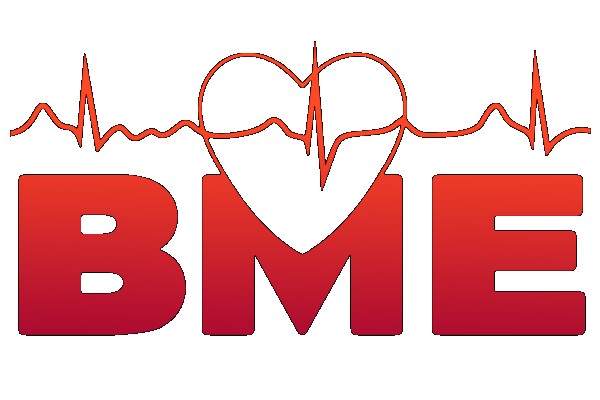lectures:
1.Electric processes in living organisms, irritant tissue, electrical events on the cell membrane, patterns of origin and propagation of the excitation in tissues, electrical properties of tissues, effects of stress and current on the organism.
2.Biopotential electrodes, oxidation, reduction and half-cell potential, materials for electrode production, electrode properties, practical realization of electrodes.
3.Biological signals and their processing, biosignal distribution, artifacts, biosignal preprocessing, patient safety during biosignal scanning.
4.Electrocardiography, heart and its activity, electrocardiography, electrocardiogram genesis, basic electrocardiogram elements, electrocardiography.
5.Electroencephalography, eElectroencephalographic lesions, electroencephalographic electrodes, electroencephalogram and its origins, electrocorhythmography, evoked potentials, electroencephalography, safety and standards in electroencephalography.
6.Electromyography, electromyographic signal and its genesis, electromyographic signal scanning, basic electromyographic modalities, electromyograph.
7.Electrogastrography, electrogastrogram and its origin, electrogastrograph.
8. Blood pressure measurement, non-invasive blood pressure measurement, invasive blood pressure measurement.
9. Heart rate measurement, thermodilution method, dye dilution method, fick method.
10. Body temperature measurement, body temperature contact, non-contact body temperature measurement.
11.Oxymetry, optical oxygen saturation measurement, transcutaneous oxymetry.
12.Pletysmography, elastic properties of the arterial system, pulse wave, plethysmograph.
13. Heart Rate Measurement, cardiotachrome activity principle, R-wave detector.
14.Respiration diagnostics, spirometry, respiratory rate measurement, analysis of breathing gas composition, whole body plethysmography.
laboratory exercises:
In the framework of the laboratory exercises, the students implement diagrams of the involvement of partial electrotechnical parts of medical diagnostic technology and carry out measurements and comparison with commercially certified devices. This is mainly the hardware design and measurement of ECG, EEG and electro-manometer. Other circuits are supportive and aid to the whole.
1. Introduction to schematics and their complex integration - familiarization with elements and power for construction
2.Symmetrator - source of Symmetric Supply Voltage
3. Stable flip-flop with integrator and comparator
Calibrator - source of calibration voltage
5. Biosensor
6.Integrated frequency modulator
7.Electromanometer
8. Pulse generator - Four pulse frequency generator
9. Heart cell stimulator
10. Biphasic pacemaker
11. Narrow pulse amplitude detector
12.Electronic thermometer
13.Bioadmitance - Acupuncture Points Detector
14. Verification of measurements on testers and comparison with commercially certified products. Assessment of the success of the tasks.
1.Electric processes in living organisms, irritant tissue, electrical events on the cell membrane, patterns of origin and propagation of the excitation in tissues, electrical properties of tissues, effects of stress and current on the organism.
2.Biopotential electrodes, oxidation, reduction and half-cell potential, materials for electrode production, electrode properties, practical realization of electrodes.
3.Biological signals and their processing, biosignal distribution, artifacts, biosignal preprocessing, patient safety during biosignal scanning.
4.Electrocardiography, heart and its activity, electrocardiography, electrocardiogram genesis, basic electrocardiogram elements, electrocardiography.
5.Electroencephalography, eElectroencephalographic lesions, electroencephalographic electrodes, electroencephalogram and its origins, electrocorhythmography, evoked potentials, electroencephalography, safety and standards in electroencephalography.
6.Electromyography, electromyographic signal and its genesis, electromyographic signal scanning, basic electromyographic modalities, electromyograph.
7.Electrogastrography, electrogastrogram and its origin, electrogastrograph.
8. Blood pressure measurement, non-invasive blood pressure measurement, invasive blood pressure measurement.
9. Heart rate measurement, thermodilution method, dye dilution method, fick method.
10. Body temperature measurement, body temperature contact, non-contact body temperature measurement.
11.Oxymetry, optical oxygen saturation measurement, transcutaneous oxymetry.
12.Pletysmography, elastic properties of the arterial system, pulse wave, plethysmograph.
13. Heart Rate Measurement, cardiotachrome activity principle, R-wave detector.
14.Respiration diagnostics, spirometry, respiratory rate measurement, analysis of breathing gas composition, whole body plethysmography.
laboratory exercises:
In the framework of the laboratory exercises, the students implement diagrams of the involvement of partial electrotechnical parts of medical diagnostic technology and carry out measurements and comparison with commercially certified devices. This is mainly the hardware design and measurement of ECG, EEG and electro-manometer. Other circuits are supportive and aid to the whole.
1. Introduction to schematics and their complex integration - familiarization with elements and power for construction
2.Symmetrator - source of Symmetric Supply Voltage
3. Stable flip-flop with integrator and comparator
Calibrator - source of calibration voltage
5. Biosensor
6.Integrated frequency modulator
7.Electromanometer
8. Pulse generator - Four pulse frequency generator
9. Heart cell stimulator
10. Biphasic pacemaker
11. Narrow pulse amplitude detector
12.Electronic thermometer
13.Bioadmitance - Acupuncture Points Detector
14. Verification of measurements on testers and comparison with commercially certified products. Assessment of the success of the tasks.
